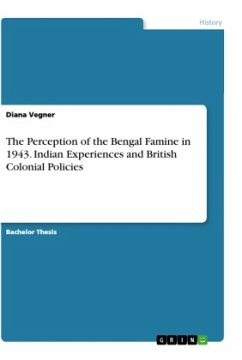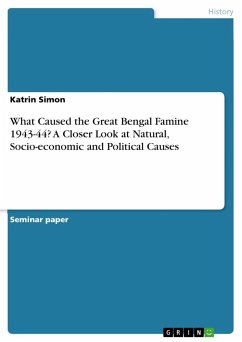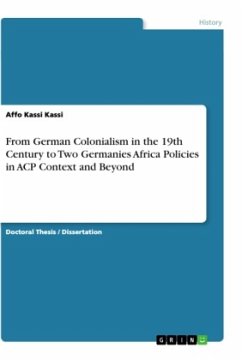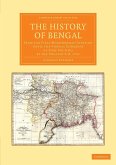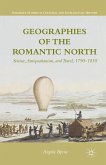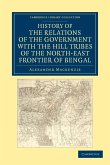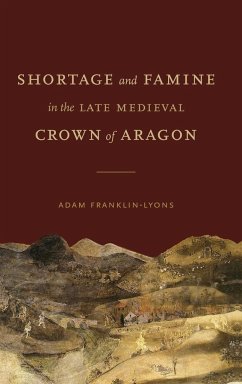Bachelor Thesis from the year 2019 in the subject History - Asia, University of Kassel (FB05-Gesellschaftswissenschaften), language: English, abstract: The guiding question for the proposed thesis reads as follows: How did the inhabitants of Bengal perceive the Bengal famine and its causes? Therefore, this analysis consists of three main research questions. The main goal of this thesis is to investigate and answer the question of how Bengal's inhabitants coped with a serious constraint of food and other aspects on a daily basis as well as looking at which caste was primarily affected by the famine. Simultaneously, when seeking explanations of the daily life in Bengal and Calcutta back then, it is important to draw the attention to the credibility and opinions of the Indian public beyond the limits of what was given in experience. As the thesis already mentioned, there were not only different assertions on basic information such as the death toll, the view of the "peasantry and middle/lower class" was mentioned only rarely in the English historiographies. Finally, the thesis does not only seek to understand but also to compare the testimonies of any causes regarding this turmoil.The Bengal famine of 1943, which occurred during World War II, is known as one of the greatest crises the human civilization has ever faced. The famine, combined with several diseases, spread fast through Bengal (mostly in Calcutta) within a short time. Moreover, this tragedy was characterized by human suffering and daily deaths. Therefore, eyewitnesses described that Bengal was overcome with a grim catastrophe. Bengal was gravely affected by the famine. In compliance with this issue, the daily life of the affected people was perceived as extremely difficult. The 20th century was known to be the century of hunger. Since the British arrived in India, the country was constantly plagued by recurring famines. Famines happened whenever poverty was a topic and people had blocked access to food and nutrition. Mostly, the famine period is viewed as a self-made catastrophe by the country. On this account, India was increasingly affected by poverty combined with food scarcity and death. Primarily, occupied territories of (former) colonies were affected by famine periods. Moreover, it can be adequately emphasized that the rural population was one of the main victims of this tragedy. India was known as a country that lost its population due to the great Bengal famine while being a colonial territory known as the British Raj.

